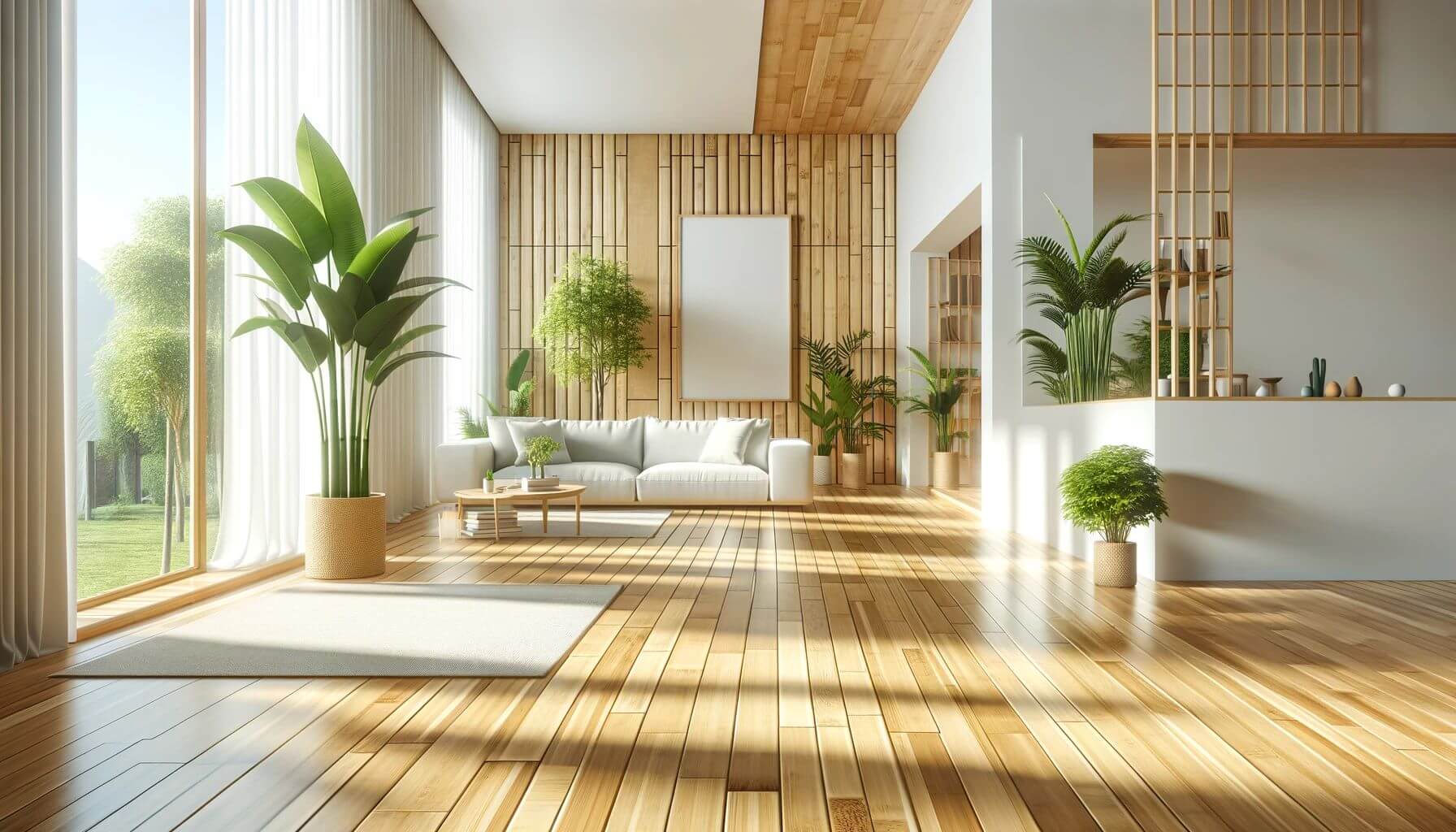In the quest for sustainability, eco-friendly building materials have emerged as a key element in creating environmentally responsible and healthy living spaces. This comprehensive guide explores the array of sustainable materials available for construction and renovation, emphasizing their environmental benefits and how they contribute to healthier homes.
Why Choose Eco-Friendly Building Materials?
Choosing eco-friendly building materials is not just about reducing the environmental impact of your home; it’s also about creating healthier living spaces for you and your family. Sustainable materials often come with lower levels of toxic chemicals, improving indoor air quality and reducing the risk of health issues. Additionally, these materials typically require less energy to produce, contribute to reducing your home’s carbon footprint, and can even lead to long-term savings through improved energy efficiency.
Key Eco-Friendly Building Materials

Bamboo
Fast-growing and renewable, bamboo is a strong, versatile material ideal for flooring, cabinetry, and furniture. Its rapid growth cycle makes it a highly sustainable alternative to traditional hardwoods.
Recycled Steel
Utilizing recycled steel reduces the demand for newly mined materials and decreases CO2 emissions associated with production. Steel is durable, recyclable, and perfect for structural supports.
Reclaimed Wood

Reclaimed or salvaged wood from old buildings, barns, or other structures offers a unique aesthetic without the environmental impact of cutting down more trees. It’s ideal for flooring, beams, and accent pieces.
Cork
Harvested from the bark of cork oak trees without harming the tree, cork is a renewable resource that’s great for flooring and insulation. It’s naturally mold-resistant and provides excellent thermal and acoustic insulation.
Recycled Glass
Recycled glass can be transformed into beautiful countertops, tiles, and decorative items. It’s durable, non-porous, and available in a variety of colors and finishes.
Straw Bales
As an insulation material, straw bales provide exceptional thermal efficiency, reducing heating and cooling costs. They’re also renewable, biodegradable, and can be sourced locally.
Rammed Earth
We should construct from natural raw materials like earth, chalk, lime, or gravel, rammed earth walls. They are sustainable, non-toxic, and provide excellent thermal mass.
HempCrete
HempCrete is a lightweight, biodegradable material made from hemp fibers mixed with lime. It’s an excellent insulator, carbon-negative, and resistant to mold and pests.
Benefits of Eco-Friendly Building Materials
- Reduced Environmental Impact: Sustainable materials are typically sourced from renewable resources, have lower carbon footprints, and minimize waste.
- Healthier Indoor Environment: Materials with low or no volatile organic compounds (VOCs) contribute to better indoor air quality.
- Energy Efficiency: Many eco-friendly materials offer superior insulation properties, reducing the need for heating and cooling, which lowers energy consumption and costs.
- Durability: Sustainable materials like bamboo, cork, and recycled steel are not only environmentally friendly but also durable and long-lasting.
Implementing Eco-Friendly Materials in Your Home

Incorporating sustainable building materials into your home can be done at any stage, from new construction to minor renovations. Start with a focus on areas like flooring, insulation, and countertops, where eco-friendly options can make a significant impact. When planning a project, consider the full lifecycle of the materials, including production, installation, maintenance, and eventual disposal or recycling.
Our Final Thought
Choosing eco-friendly building materials for your home is a step towards sustainability, health, and efficiency. By selecting materials like bamboo, recycled steel, and HempCrete, you contribute to a more sustainable world while creating a healthy, energy-efficient home for your family. As the demand for sustainable building practices grows, these materials become more accessible, offering a wide range of options for eco-conscious homeowners.


Leave a Reply